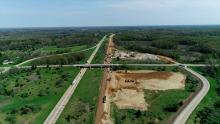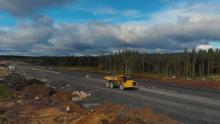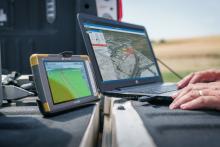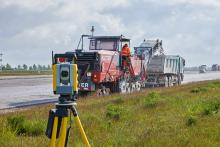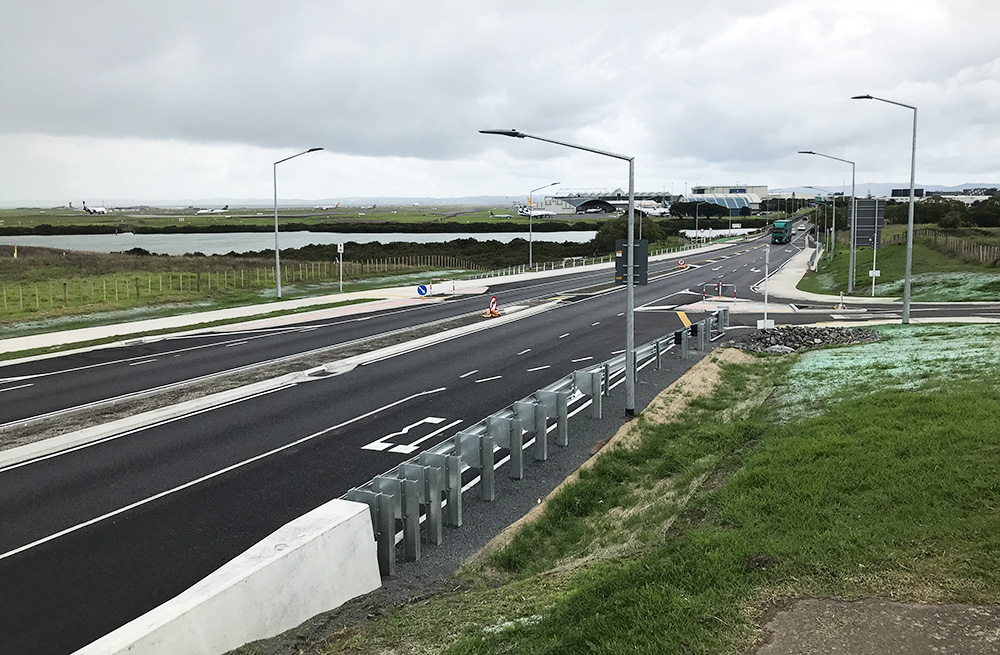
In a joint initiative between government and Auckland International Airport, Waka Kotahi NZ Transport Agency led a project to improve the traffic flow rates to and from the airport. Ameer Bahho, Waka Kotahi project manager, said the driver for this project was not just improving connectivity to the airport and south Auckland, but being able to offer safer and more reliable transport choices, including public transport services. The job appeared straightforward; upgrading the road to accommodate two extra lanes dedicated to public transport and high-occupancy vehicles (three or more people), as well as supplementing it with a shared path for people walking or on bikes.
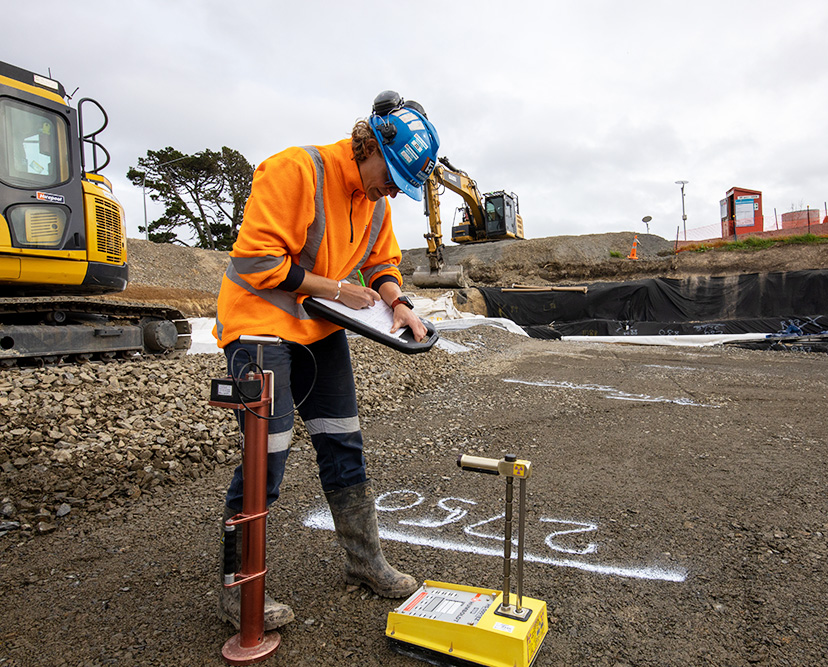
However, this was not simply a widening project. Instead, a completely new road was to be built using the old alignment.
From the very beginning, the project had an ambitious time frame – 19 months (two summers, one winter) were allowed for the construction phase as the America’s Cup yacht racing, scheduled for early 2021, was to bring thousands of visitors into the city from all over New Zealand and the world.
“In order to meet our 2021 time frame, we had to juggle a few balls to make it work,” said Bahho.
“We had to do a few things in parallel: consenting in parallel with land agreements, in parallel with legal agreements, and partner agreements, and so on. This was a challenge, but we were also required to look outside the box when it came to construction.
“We needed to accelerate the work to ensure it still met the time frame, without compromising quality or the safety of our crew and those using the road.
“We put the challenge out to the team. We wanted to see what changes could be made to the design, the contract – all our key drivers.
“It’s a story of collaboration and teamwork, to work as one to achieve the desired result.”
James Rooney, technical director for designers Aurecon, said the solution was found thanks to the one-team approach between the contractor, designer, and clients.
“There were no walls between divisions, and we approached the project with open minds and honesty.”
In fact, Rooney says the contract was rewritten to become a cost-reimbursement contract. “It’s like a mini-alliance but with fewer overheads,” he explained.
The solution that would deliver the desired time-saving result was a surface pavement redesign, facilitated by GPS machine control from Trimble.
Project manager Richard Anthony, of contracting firm Fulton Hogan, said that instead of the usual three stages of road building, where first one side of the road is constructed, then the other, before the middle is completed to tie them together – the new approach entailed just two stages.
“We started by doing a traditional widening on one side, with a temporary pedestrian and cycle path running down alongside, but once we reached a certain stage, we started working in the middle of the road, which is quite unusual.
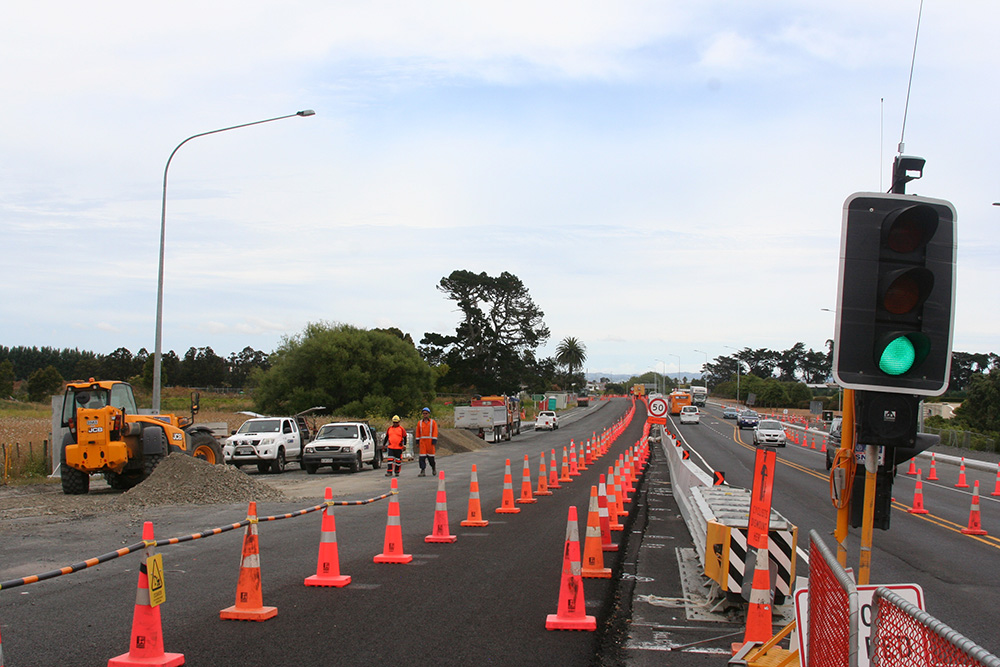
“Normally, you like to have two sides to tie in to before you start doing the middle piece of work.
“We went through quite a few trials with the designers and clients to come up with a method that would allow us to construct the road during the night and reopen it each morning.
“We went to an asphalt option, which enabled us to mill to the new final profile and then lay the asphalt through.”
This was not an overlay or a mill and replace, he said. “We had a complete change of level in places, of up to 1.6m.”
The project began in January 2020, but within a few months, the outbreak of COVID-19 threw a spanner into the works. However, the project team quickly adjusted to new health and safety rules, instigating social distancing and other safety measures onsite.
“We didn’t focus on the challenges Covid presented, but the opportunities,” said Bahho.
“There was lower demand on the network as a whole, and when you’re trying to do a road project, your biggest risk onsite is always live traffic. So, right away, our biggest risk dropped significantly.
“With lower traffic demands, we were able to do things differently. Rather than working behind cones and enclosures, we started closing the road at night, which allowed us to create a much safer working environment by eliminating the live traffic aspect. It also improved efficiency.”
Anthony said the team was able to use total night-time closures for eight months, allowing the construction crew to work across the whole road and ensuring that the time spent onsite was much more productive.
“We would close the road in the evening – keeping one lane open with the aid of a stop/go sign. Then we’d take a bit of the old road out, put a new bit in, build a ramp for traffic to transition between the two, and open the road to traffic again in the morning.
However, Anthony said that the new road and the old road didn’t align at all: “This made things exciting. But this is where the Trimble technology came into its own.”
The 2m-wide mill would take out up to 400mm of the old road, in places right down to the clay, where the original lime-stabilised base was in good condition – in fact, better than expected. However, the mill would cut to the correct level for the new pavement to be laid at 390mm thickness.
“It would auto-adjust as needed. This meant we were putting the correct thickness of pavement back in, so when it came to laying the final level (two layers of asphalt), it was straightforward.
“With the Trimble technology we could achieve accuracy of 10mm or better, in fact, we were usually within 5mm, which, considering the size and type of equipment we were using, was amazing.

“Line marking would take place at the end of each week – we used cones to delineate the lanes during the week.
“Fortunately, our method of construction isn’t as weather dependent as traditional road building,” says Anthony. “The night shift, which ticked over more than 100 shifts, only lost five shifts due to rain.”
Bahho adds, that with a shortened construction season (a whole summer was lost), every trick in the book was explored, including weekend road closures, known to the team as ‘super weekends’.
“On this project we ended up doing three super-weekends, where we shut down the road completely over a 48-hour period. This has never been done before on major state highway right next to an international airport.”
But while lockdown-induced lower traffic volumes were helpful, adjusting to the new rules around lockdown took a good chunk of the late-summer weather.
There were other unexpected challenges to deal with as well. Upgrading the junction at the Manukau Memorial Gardens required particular care. The cemetery serves a large Pacific Island community and frequently sees large funerals and numerous visitors throughout the day and night.
“We had to be sympathetic to the needs of the community, ensuring they were still able to access the cemetery, to bury and visit their dead in the way they needed to,” said Anthony.

He is quick to stress that collaboration between the players is what has led to the success of this project. “The clients are happy because we’ve gone and done what we said we’d do.”
“We had a couple of big but simple ideas, plus 100 other small ones, that enabled us to deliver.
“Doing the project in two stages saved about three months and installing wick drains in the fill over the poor soils near the Manukau Memorial Gardens reduced the settlement time from three months to just one. Together, these two initiatives saved five months on the programme.
“But the collaboration between the team can’t be underestimated. Having Aurecon on board and onsite helped us to make quick sensible decisions. Working closely with Trimble and utilising its total station control to get the millimetre tolerances we required was paramount.”
Rooney agreed. “The gains we’ve made using this technology is something every client should be interested in. Yes, it has cost more, but that isn’t the driver here. While around 30% more expensive than originally budgeted, we have seen five months in time savings. That’s phenomenal.
“So, while it’s cost more, the client has had the job finished sooner, which is good for the public.”
Faster and safer
Jan du Preez, of survey subcontractor Terramatrix, explained that without the Trimble GPS technology, the project would have taken longer and had higher surveying costs. “With live traffic going through the site, there was just no way to have traditional survey methods employed here. We had to look at different ways to do it.
“So, we got machine-controlled plant onsite, and it’s worked like a dream,” he said.
“We’ve run GPS machine control for all our excavators doing bulk earthworks, as well as robotic total stations with the dozers and the graders on the paving and layer works.”
For GNSS corrections, the team chose to have a Trimble GNSS Real-Time Kinematic fixed base station onsite. It has a dedicated channel so only the people onsite can log onto it and all the machinery worked off the same corrections.
Du Preez said that the team is “…pretty exclusive” on Trimble gear onsite: “The mills and the pavers all run with Trimble total stations – SPS930s – and most of the machinery onsite is using Trimble grade control. Even the drain layers are using the Trimble digital levels.
“The technology was great in overcoming some of the challenges we had onsite – things like live traffic, steep batters and slopes on the side of the road, and working at night. It could have been laid out traditionally, with survey stakes with level controls on, but it would have been survey-heavy and resource-heavy, with a lot of downtime for the machinery.
“However, the technology allowed us to load the models into the machines, and the guys could continue working day and night, able to confidently move from one area to the next without having to wait for surveyors,” said du Preez.
“It also meant there were fewer people running around between machines and live traffic, putting in pegs and checking levels.”
Having fewer people onsite also helped with ensuring social distancing between workers.
“The technology made this project a lot faster and a lot safer.”
Auckland Airport
Auckland International Airport is the largest and busiest in New Zealand. It is located close to the suburb of Mangere, around 21km from Auckland’s city centre. It is one of only two airports in New Zealand able to handle large-bodied airliners such as the Airbus A380, the other being Christchurch Airport, although Auckland Airport handles most of the country’s international flights. Before the pandemic hit, Auckland Airport handled some 21 million passengers/year.
The airport was first used by aircraft in 1928 when it was known as Mangere Aerodrome. It was not until the 1960s that it was expanded to become Auckland’s main airport, having its official opening in early 1966 although international flights had actually commenced in late 1965. The current extended airport was constructed largely on reclaimed land and further development is planned to boost capacity.


